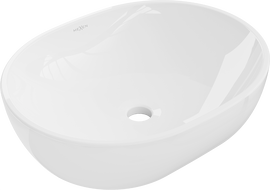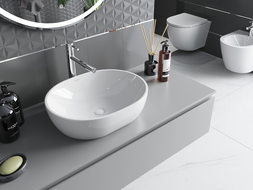
If you are considering purchasing and self-installing vinyl panels, this entry contains essential tips for you.
From this article you will learn among others:
- how to plan the layout of vinyl panels;
- how to prepare the substrate for laying panels;
- how to lay vinyl panels.
Plan the Laying of Vinyl Panels
Before you start self-installing vinyl panels, you need to plan exactly how your new floor will look.
- The first step is to measure the area of the floor where you plan to lay the panels accurately.
- Next, decide what type of vinyl panels will best fit the given room. Vinyl panels can come in various patterns, colors, and textures, so it’s important to choose them to match the specific interior and your stylistic preferences. You will easily find panels suitable for finishing a living room, kitchen, or bathroom.
- Accurate measurement of the floor will allow you to calculate how many packs of vinyl panels you need to buy. At this stage, it’s important to plan in which direction the panels will be laid; it is usually recommended to install them parallel to the longer wall of the room, perpendicular to the light source.
- When deciding on a specific pattern of panels, pay attention to how it will present itself, as a properly selected pattern as well as panel layout can influence the optical enlargement or reduction of the space. This is also the right moment to decide whether you will invest in self-adhesive vinyl panels, glue-down panels, or also panels installed in a floating floor system.
You can order vinyl panels 1240 mm long and 182 mm wide from Mexen.pl. Knowing the dimensions of the boards, you can easily calculate how many packs of product you need. This way, you avoid excessive shortages or surpluses of materials.
Prepare Vinyl Panels Before Laying
Follow the steps below before laying the floor:
- After purchasing the panels, remember to leave them in the room where they are to be laid - for at least 48 hours. This will allow them to acclimate to the conditions and reduce the risk of cracking or deformation. This is particularly important, especially if you plan to lay the panels during the colder months.
- After unpacking, check if all panels are exactly as they should be - regarding both color and whether any of them is damaged. In case of any problems, consider replacing the defective packaging.
- The next step will likely be cutting a few pieces. For this purpose, using a measuring tape and a square, mark the places where you will make the cuts. Vinyl panels are most conveniently cut with a special saw for this type of panel.
- Baseboards must also be cut so they fit the dimensions and shape of the room where they will be used.
Preparing the Substrate for Laying Vinyl Panels
Before you start installing vinyl panels, you need to take care of properly preparing the entire floor surface.
- The floor must be clean, dry, and smooth; this is particularly important if self-adhesive or glue-down vinyl panels will be used. In the case of vinyl panels installed in a floating floor system, small imperfections or dust on the floor surface won’t be a major issue.
- If there are unevennesses on the floor exceeding 1 mm in length greater than 20 cm, they should be leveled using a cement leveling compound.
- For a concrete floor, make sure it is properly leveled and primed.
- Vinyl panels allow for effective use of underfloor heating, so before you lay them, make sure that the heating system is installed properly.
Before you start laying the floor panels, use a suitable underlay. Choosing the right underlay significantly affects the comfort of using the floor. It affects the temperature and acoustics of the panel surface in a given room. It’s best to choose an underlay specifically designed for vinyl floors.
Also, pay attention that vinyl panels used over underfloor heating should not be too thick, as they must allow heat to pass through freely.
At Mexen.pl, you will find vinyl panels that are 6.5 mm thick, so you can successfully use them as flooring even where you decide to use a modern way of heating the room, such as embedding the heating system directly in the floor.
Step-by-Step Installation of Vinyl Panels
The laying of vinyl panels usually starts from one of the corners of the room - most often from the left side according to the direction of light in the given room, which is perpendicular to the windows.
Familiarize yourself with the steps below to lay the panels professionally:
- Step 1: place the first panel along the wall, leaving a small gap (usually about 0.5 cm) between the panel and the wall to allow for possible expansion and contraction of the floor during use. The appropriate expansion gap will be ensured by spacer blocks placed between the panel and the wall, which are removed after finishing the flooring;
- Step 2: then lay the next rows of panels, connecting them with each other using the click system or glue. The connection of panels depends on which model you choose;
- Step 3: lay vinyl panels across the entire floor surface;
- Step 4: when you finish, make sure that the floor is even, and the individual panels are fitting together - if each element has been installed correctly, there should be no gaps between them;
- Step 5: finally, attach the baseboards.
If any irregularities appear during the installation of vinyl panels, correct them continually, so that the individual elements fit perfectly together.
Note that when laying panels along the wall, it may be necessary to trim them at the ends. To do this, measure precisely and mark the places where you want to make the necessary cuts.
What Else is Worth Knowing About Installing Vinyl Panels?
The installation of vinyl panels may differ depending on the manufacturer and their type. Self-adhesive panels are attached in a different way than those installed in a floating floor system. Therefore, before reaching for one of the selected products and starting work, familiarize yourself with the manufacturer’s instructions.
If you are wondering how to lay click vinyl panels, it is really simple:
- Step 1: first, connect panels on their shorter sides;
- Step 2: the entire length of the panel should be locked into the previously laid row;
- Step 3: lift one end of the board, which you want to install, at the correct angle and place its tongue against the groove of the previously laid pieces;
- Step 4: after pressing the board down, you will hear a characteristic sound - a click that informs you of the correct placement of the panel.
Most often, vinyl panels are laid on a cement screed - the moisture content in the substrate should not exceed 2.5%, and in the case of installation with underfloor heating, it can be a maximum of 1.5%.
Laying vinyl panels on a wooden floor is also allowed. This is a very convenient way to renovate a damaged floor without tearing up the old coverings. This way, you can achieve the effect of a perfectly smooth floor that imitates the appearance of natural wood.
Remember that…
...carpet cannot be used as an underlay for vinyl panels.
Choosing the Method of Laying Vinyl Panels
The method in which your new panels will be laid mainly depends on the dimensions of the room and individual aesthetic preferences. Vinyl panels can be laid with a regular offset, creating the effect of what is called a brickwork. It’s best to apply an offset of one row of panels in relation to the next:
- by half the length of the board,
- by 1/3 of the length.
If you want to achieve a more original effect, lay the panels at irregular intervals. This way, you create a floor with a modern and unique appearance. It’s also a good method to utilize the panels that remain after finishing the floors throughout the apartment.
Installation of Vinyl Panels – Summary
Vinyl panels are a fairly forgiving material, allowing for minor mistakes; however, in the case of installing a larger area, it is worth seeking professional help. If you decide to do it yourself, remember that the work should consist of the following stages:
- accurately measuring the floor in the room to calculate the necessary amount of panels;
- adjusting the length of the panels to the size of the room;
- preparing the floor - a properly prepared substrate must be clean, dry, and free from irregularities; this is particularly important if this will be vinyl floor mounted with glue;
- choosing the method of laying panels - glued floor or in a floating system;
- installation of the vinyl floor;
- finishing the floor with baseboards.
As you can see, self-installation of vinyl flooring is a task that requires time and precision, but it’s not that difficult. Laying the floor in a floating system does not require specialized knowledge or skills, especially if it concerns a smaller room.
Correctly laid vinyl flooring will serve you for many years, successfully replacing parquet or wooden boards. It is not only beautiful but also easy to maintain.

















